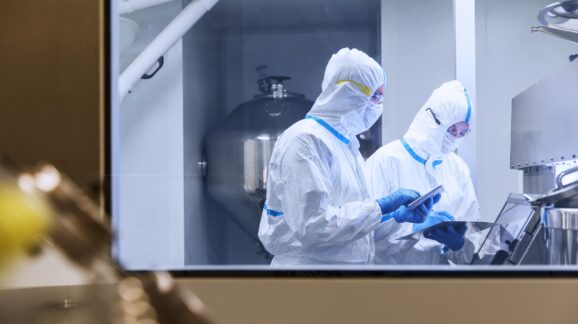Was the U.S. furtively funding the lab research that unleashed Covid-19?
Was the U.S. furtively funding the lab research that unleashed Covid-19?
Slowly but surely, new cracks are appearing in the wall of silence denying Chinese culpability in causing the nearly 7 million deaths attributed to Covid. In a classified intelligence report on the origin of the SARS-CoV-2 virus that caused the Covid-19 pandemic, the U.S. Department of Energy concluded, based on new but still secret intelligence, that the Covid-19 virus leaked from a lab in Wuhan, China. The DOE — which runs biosecurity labs at the Lawrence Livermore National Laboratory, a biological-safety program, and the Biological and Environmental Research (BER) program to fund research into organisms’ genetic codes and how to “reengineer” them — now agrees with the 2021 assessment by the Federal Bureau of Investigation that the pandemic was likely the result of a lab leak.
From the start of the pandemic many highly respected scientists raised the possibility that the virus was the product of gain-of-function research in which naturally occurring coronaviruses collected from bats were manipulated in a laboratory to acquire an enhanced ability to infect humans. The alternative hypothesis was that SARS-CoV-2 was a naturally occurring virus that passed from bats through an intermediate host to humans. There were multiple reasons to suspect that SARS-CoV-2 was created at the Wuhan Institute of Virology (WIV) and then leaked, either intentionally or accidentally.
The WIV is a leading center for research on bats and coronaviruses and was actively engaged in gain-of-function research to genetically engineer bat coronaviruses to attack human cells. U.S. State Department inspectors reported that the lab was conducting this research with sub-par safety controls. The WIV is located in Wuhan, China, where the first reported cases of Covid-19 occurred. Moreover, U.S. intelligence sources and the State Department reported that several WIV researchers were hospitalized with Covid-19-like symptoms months prior to the Chinese government’s announcement of the first cases.
In previous cases of animal-to-human transmission of respiratory illnesses, researchers had uncovered intermediate animal hosts and serologic signs of infections in animal traders within months of the outbreak. But such evidence remains elusive for Covid-19. Three years into the pandemic, no one has found a bat-source population, SARS-CoV-2 circulating in an intermediate species that functioned as a conduit between bats and humans, or evidence that SARS-CoV-2 was present anywhere else before it appeared in Wuhan.
Finally, SARS-CoV-2 contains a unique furin cleavage site (FCS) in its spike protein that augments its pathogenicity and transmissibility relative to related viruses, none of which have the cleavage site. The spike protein is what enables the virus to recognize, attach to, and enter the cells lining human airways. It has two sub-units: S1, which recognizes the virus’s target, a protein called angiotensin converting enzyme-2 (ACE2) on the surface of airway cells; and S2, which allows the virus to fuse with the cell and inject its genetic material that instructs the cell to make more viruses. Furin is an enzyme expressed by human cells that separates the two spike-protein sub-units at the cleavage site, enabling the virus to bind more efficiently to human cells and release its genetic material into them. The unexpected presence of the FCS suggested that SARS-CoV-2 might be a product of laboratory manipulation. Nobel Prize winner David Baltimore called it a smoking gun.
But the scientific establishment and the media were determined to dismiss the possibility of viral manipulation and a leak from the Wuhan lab. When Senator Tom Cotton and such conservative newspapers as the Daily Mail and the Washington Times raised the possibility of a Chinese lab leak early in the pandemic, the Washington Post dismissed their concerns as a debunked conspiracy theory. The New York Times labeled it a “fringe theory.”
Many scientists who initially favored the lab-manipulation-and-leak hypothesis rapidly and inexplicably changed their tune. Virologist Kristian Andersen emailed Dr. Anthony Fauci on January 31, 2020, with concerns that features of the virus made him wonder whether it had been engineered; he noted that he and other scientists “all find the genome inconsistent with expectations from evolutionary theory.” The following day, eleven virologists who had concerns about lab manipulation held a telephone conference with Fauci and National Institutes of Health director Francis Collins.
Then, just three days later, four of the participants on the call sent a draft of a proposed letter to Fauci and Collins. That letter, published online on February 16 and subsequently in an updated version on March 17 in the journal Nature Medicine, with Andersen as lead author, concluded that “our analyses clearly show that SARS-CoV-2 is not a laboratory construct or a purposefully manipulated virus.”
Read the full article on the National Review.
